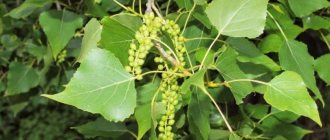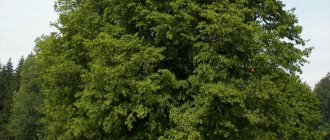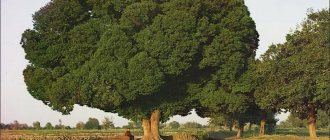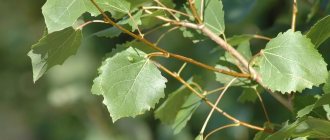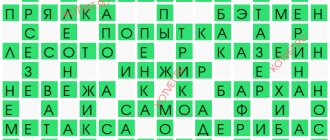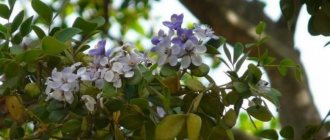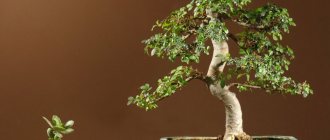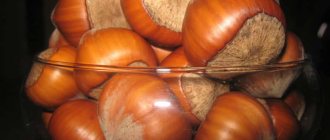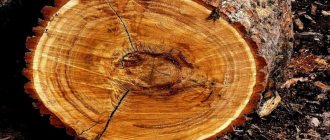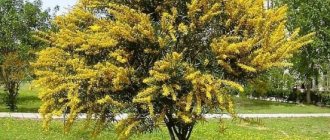Beech is a deciduous, majestic tree belonging to the Beech family. In terms of decorativeness and its characteristics, it occupies an important place among various deciduous species. Beech is a tree, the description of which is a fascinating process, because beech is considered a very interesting representative of the flora. The tree spreads its branches widely, thus forming a huge tent, into which even the hot summer rays of the sun cannot penetrate. Accordingly, a pleasant coolness is felt under it even in the most intense heat.
The beech forest resembles a colonnade, inside which darkness and silence reign. The tree has about 10 species and grows in the Northern Hemisphere. Grows in height up to 45 m.
Description
Beech is a type of tree that has a smooth, powerful trunk covered with pale gray bark. It has densely leafed branches, a cylindrical dense crown rounded at the top.
The alternate leaves are arranged in two rows. The leaf is elliptical in shape, with feathery veins and solid, slightly wavy edges. Slightly pubescent underneath. The beautiful dark green color of the foliage changes in autumn to bronze or straw yellow.
Flowers are collected in small inflorescences and appear along with the growth of leaves. They can be of different genders. Staminate flowers have an average of 10 stamens. They gather in small capitate inflorescences. Pistillate flowers are collected in groups of 3 and are surrounded by a plus, which grows and becomes woody as the fruits ripen.
Beech species
A beech grove may include several species of trees. Let's look at the most common ones.
- European beech (forest). This is a large tree with a powerful ovoid crown and a slender trunk, reaching a height of 40 m and a width of 15 m. Its branches are arranged horizontally or arched. The leaves are elliptical, large, slightly wavy along the edges, leathery, shiny; In summer they are dark green, and in autumn they turn very impressive into copper and yellow tones. Forest beech grows naturally in Europe, as well as in Russia, Belarus and Ukraine.
- Large-leaved beech. The tree reaches a height of 40 m. It has a pyramidal crown and bluish-gray bark. Its leaves are bluish-green, bright, oblong or oval, pointed. Grows in North America.
- Eastern beech. The tree reaches 50 m in height. It has a wide ovoid or rounded crown. This beech is close in appearance to the forest one, although it differs from it in having longer, large leaves and a rounded crown. In nature, it is distributed in the Crimea and Asia Minor, and is also found in the Caucasus.
Care
The first fertilizing is carried out during planting. Equal parts of nitrogen and potassium-phosphorus fertilizers are added to the soil. In the future, it is necessary to provide the seedlings with organic matter and minerals. Every 3 weeks you can water the plants with a liquid solution of mullein.
Beeches are very sensitive to lack of moisture . It is recommended to water them during the first 2–3 years throughout the warm season: every 15 days at the rate of 15 liters of water per 1 tree. In hot summers it is useful to spray the crowns with a small watering can.
For the winter, the roots of young beeches are covered with a thick layer of sawdust and spruce branches. In frosty weather, the crowns are wrapped in burlap.
In the first few years, beeches grow very slowly. In the fourth year, they usually begin to quickly grow in height, up to half a meter per year. From this period you can start shaping haircut. Frosted branches are cut off annually in early spring.
Places of growth
The eastern beech tree is common in the Crimea, where at a level of 1000 meters it forms a forest belt.
Beech grows in the Kaliningrad region, Crimea, Belarus and Ukraine. Close to eastern beech.
In addition, forest beech is found in Europe, America, Japan and China. It grows mainly in gorges, along river banks, on mountain slopes, and sometimes on plains. Beech forests grow at an altitude of approximately 500 meters above sea level. The maximum age of beech reaches 500 years.
Every year, a hectare of beech forest releases about 5 thousand tons of vapor into the atmosphere - hence the fog rising above the forest and cloudiness. And since deciduous trees have a higher need for water than resinous ones, they noticeably increase atmospheric humidity, thereby exerting a profound regulating influence on the climate. This means that massive deforestation automatically entails long-term climate changes, in most cases unfavorable.
Part used
Beech nut and wood refer to the part of the tree used. The kernel of the nut contains tannins and nitrogenous substances, fatty oils, sugars, starch, tocopherol, fiber and organic acids, including citric and malic acids. They contain the alkaloid fagin and ash. It should be noted that the alkaloid fagin is a toxic substance. If raw nuts are consumed immoderately, this will lead to gastritis and headaches, as well as inflammation of the small intestine. Therefore, you should handle these fruits carefully.
Reproduction and cultivation
Beech grows very slowly. It is a very shade-tolerant and at the same time heat-loving tree. Beech is demanding of soil moisture and can hardly tolerate drought; it prefers to grow on calcareous soils.
As mentioned above, beech belongs to the Beech family. We can safely call this family “long-livers”: Beech trees for the most part live up to almost five hundred years! However, these trees have a low level of frost resistance. Beech needs a warm, protected place. Southern areas are preferred for the spread of beech trees, otherwise they may freeze slightly.
The beech tree propagates by seeds, cuttings and layering. European beech is used not only to create powerful plant tracts in parks, but also in single plantings. Beech makes excellent hedges. They can be trimmed and given different shapes. This tree has long found its place in cultivated places.
Beech combines well with other trees - pine, white fir, hemlock, common spruce, yew, juniper, rowan, plane tree, birch, oak, hazel and others. Beech is often planted for decorative purposes because it lends itself well to shaping: it can be easily trimmed. These trees are used to create all kinds of geometric shapes. They are perfect for decorating high hedges not only in parks, but also in private residential areas.
Grade of beech lumber in accordance with GOST
The grade of beech lumber is determined by the presence and degree of manifestation of the following defects and processing defects:
- Dimensional accuracy;
- Humidity;
- Rot;
- Cracks;
- Knots;
- Mold damage;
- Breakouts, etc.
First grade (Grade A)
Does not allow:
- fused healthy knots with a diameter of more than 1 cm; knots on faces more than 10 cm wide; knots on the edges (more than 1/3 of the thickness for a single and paired knot), as well as more than 20 partially fused and unfused knots;
- falling out and rotten knots, cracks, porosity, mushroom spots and rot;
- acute wane
Allows:
- individual stripes and spots of mold and fungal stains on the sapwood;
- mechanical damage and processing defects within 5 mm;
- slope of the cut within 5% of the thickness and width of the lumber;
- blunt wane (up to 1/5 of the width of the lumber);
- longitudinal winging of the face and edge (up to 0.5% of the length);
- transverse winging (up to 1% of the width of the lumber).
Second grade (Grade B)
Does not allow:
- fused healthy knots with a diameter of more than 2 cm; knots on faces more than 20 cm wide; knots on the edges (more than 1/2 thickness for single and paired knots), as well as more than 40 partially fused and unfused knots;
- falling out and rotten knots, cracks, porosity, mushroom spots and rot - more than 10 pcs.;
- sharp wane more than ¼ of the width of the edge.
Allows:
- mold damage;
- wormholes (but no more than 3);
- mechanical damage and processing defects within 5 mm;
- slope of the cut within 5% of the thickness and width of the lumber;
- blunt wane (up to 1/3 of the width of the lumber);
- longitudinal winging of the face and edge (up to 1% of the length);
- transverse winging (up to 2% of the width of the lumber).
Third grade (Grade C)
Does not allow:
- fused healthy knots with a diameter of more than 5 cm; knots on faces more than 50 cm wide; partially fused and unfused knots more than 30 pieces;
- falling out and rotten knots, cracks, porosity, mushroom spots and rot - more than 25 pcs.;
- sharp wane more than 1/2 of the width of the edge.
Allows:
- knots on the edges;
- mold damage;
- wormholes (no more than 5);
- mechanical damage, processing defects and minor deformations;
- slope of the cut within 5% of the thickness and width of the lumber;
- blunt wane (up to 1/2 of the width of the lumber);
- longitudinal winging of the face and edge (up to 2% of the length);
- transverse winging (up to 3% of the width of the lumber).
Harvesting and collection
To harvest beech wood, you need to carefully cut off a small part of it with a sharp object. This is usually done in September-October. Then the wood is cut into small pieces and placed to dry in a well-ventilated place, for example, under a simple canopy.
Wood needs to be turned over sometimes. This is necessary so that it does not become damp and moldy. After the raw materials are completely dry, they are placed in paper bags and then stored in a ventilated, dry room for storage.
As mentioned above, the beech tree has fruits - nuts. They are harvested at the end of September when they reach maturity. Then they are laid out in a thin layer on a tray located in a ventilated place. This place should be protected from children. It should not be in a house where people live, otherwise the whole family may suffer due to poisoning. Beech trees contain a toxic substance - the alkaloid fagin.
The raw materials must sometimes be turned over, thus ensuring high-quality and quick drying. After the nuts have dried, they are packed into bags, which are then placed in a ventilated room.
Regions where the tree grows
Russia is one of the European countries where you can see entire beech forests. Based on the fact that beech is the most valuable raw material for construction and for making furniture, the cutting of the species is carried out as planned. Planned felling is the sorting of trees whose age is suitable for thinning forest areas.
Special forestry commissions allocate the number of trunks that are allowed for cutting. The right time for cutting down is the winter period: the moment at which there is practically no movement of sap in the wood. After cutting, such raw materials are transported to sawmills, where the wood is sorted based on its quality and dried in special rooms.
Application
The substance creosote present in this plant is used as an external remedy, since it has a disinfecting and cauterizing effect. In addition, it is used for inhalation for chronic respiratory diseases, for example, bronchitis.
Creosote has a specific, very unpleasant odor and taste. This substance is irritating to the stomach and also to the kidneys. It is often replaced with guaiacol and other drugs.
The Beech family is also famous for the fatty oil produced from its fruits. It is used in the food industry. At the same time, flour is made from the seeds of the plant, using it for baking. These seeds are also subjected to slight heat treatment in the form of roasting. In this form, they are used to create a coffee drink with excellent dietary characteristics.
Use in folk medicine
For herbalists and traditional healers, the bark and leaves of European beech are valuable. They are used in the treatment of:
- Gastrointestinal tract;
- diabetes;
- skin and hair diseases;
- respiratory system.
Tea is the most common form of consuming beech leaves as a medicine. This drink has a whole range of beneficial properties. The tea should be brewed as follows: pour 250 ml of boiling water over a teaspoon (teaspoon) of crushed dry beech leaves and let it brew for thirty minutes. When taken orally, prescribe 200 ml of the drink three times a day before meals.
Leaf tea has several possible uses.
As compresses and lotions on wounds and ulcers. One of the main properties of beech-based preparations is healing and antiseptic.
As an additional remedy in complex therapy for the treatment of diabetes and stomach pain, tea improves appetite and has a calming effect on the nervous system.
Contraindications
Beech trees contain the toxic alkaloid fagin. This toxic substance is also found in raw nuts, which are not recommended for consumption. The alkaloid fagin disappears only when exposed to high temperatures.
Quite severe poisoning is possible in young children who eat nuts raw, as well as in adults with insufficient heat treatment.
It should be noted that poisoning with this product causes discomfort in the hypogastric region, general malaise, acute gastroenteritis, nausea, and headache.
In case of poisoning, you need to do cleansing enemas and gastric lavage.

